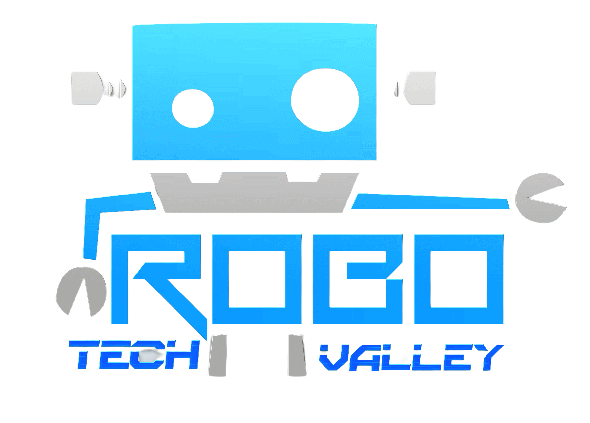Artificial Intelligence (AI) and Machine Learning (ML) are revolutionizing the IT industry, enabling smarter automation, enhanced cybersecurity, and data-driven decision-making. As businesses embrace AI-driven solutions, the IT sector is witnessing unprecedented advancements that are shaping the future of technology. From optimizing IT operations to strengthening security and enhancing customer experiences, AI and ML are paving the way for a more efficient digital landscape.
1. Automation of IT Processes
AI-powered automation has significantly improved IT operations by minimizing human errors and streamlining repetitive tasks. From network management to predictive maintenance, AI-driven tools enhance efficiency by analyzing vast datasets in real time. Businesses leverage AI for software deployment, system monitoring, and troubleshooting, reducing operational costs and increasing productivity. Automated IT support systems powered by AI can proactively detect and resolve technical issues, ensuring seamless business operations.
AI-driven robotic process automation (RPA) is also reshaping the IT workforce by automating mundane tasks like data entry, ticketing, and infrastructure management. This allows IT professionals to focus on more complex and strategic initiatives, driving innovation and growth.
2. Enhanced Cybersecurity
Cyber threats are evolving, and AI-driven security solutions are the key to combating them. Machine learning algorithms detect unusual patterns, preventing cyberattacks before they occur. AI-powered security systems continuously monitor networks, identifying vulnerabilities and strengthening defenses against data breaches and malware threats.
Moreover, AI-driven cybersecurity tools can detect phishing attempts, ransomware, and insider threats with greater accuracy than traditional security measures. By analyzing large amounts of data in real time, AI can identify and neutralize threats before they cause damage. IT firms are increasingly integrating AI into their cybersecurity strategies to ensure data integrity, compliance, and business continuity.
3. Improved Decision-Making with AI-Powered Data Analytics
AI and ML enhance data analysis by extracting actionable insights from complex datasets. AI-powered predictive analytics help businesses optimize strategies, improve customer experiences, and forecast future trends. Organizations utilizing AI-driven analytics gain a competitive edge by making informed, data-backed decisions.
For instance, AI in IT service management enables real-time performance tracking, helping businesses optimize their IT infrastructure. AI-driven analytics help organizations analyze customer behavior, market trends, and operational inefficiencies, allowing for better strategic planning and resource allocation.
4. Smarter IT Support with AI Chatbots
AI-driven chatbots are transforming IT support by providing instant assistance. These intelligent virtual assistants troubleshoot technical issues, guide users through problem-solving, and escalate complex cases to human support teams when necessary. AI-powered IT support reduces operational costs and enhances user satisfaction.
By using Natural Language Processing (NLP), AI chatbots can understand and respond to user queries more effectively. They can offer personalized solutions, predict user intent, and provide automated ticketing systems, reducing downtime and improving service quality. Businesses implementing AI-driven IT support experience increased efficiency and improved customer service.
5. AI in Software Development
Software development is undergoing a transformation with AI-driven tools that automate code generation, detect bugs, and optimize performance. AI-powered development platforms assist programmers in writing efficient, error-free code, accelerating the software development lifecycle and improving overall software quality.
AI-based code completion tools like GitHub Copilot and DeepCode help developers write better code faster. These tools analyze large code repositories and suggest optimal coding solutions, reducing development time and errors. Additionally, AI-driven testing tools automate software testing, ensuring high-quality application performance before deployment.
6. Revolutionizing Cloud Computing
AI is reshaping cloud computing by optimizing resource allocation, automating maintenance, and enhancing security. Businesses are increasingly adopting AI-driven cloud platforms to manage workloads efficiently. AI-powered cloud services ensure seamless scalability, reducing downtime and improving system performance.
Cloud providers like AWS, Microsoft Azure, and Google Cloud are leveraging AI to provide intelligent cloud services, including automated security monitoring, cost optimization, and predictive analytics. AI-driven cloud solutions empower businesses to scale dynamically, optimize energy consumption, and enhance disaster recovery strategies.
7. AI-Driven IT Infrastructure Optimization
AI is playing a crucial role in optimizing IT infrastructure by automating capacity planning, workload distribution, and system upgrades. AI-powered tools monitor IT infrastructure in real-time, predicting hardware failures and suggesting proactive maintenance. This minimizes downtime, reduces maintenance costs, and improves system reliability.
Companies are integrating AI-driven IT operations (AIOps) to enhance performance monitoring and automate troubleshooting. By leveraging machine learning algorithms, AIOps platforms analyze system logs, detect anomalies, and recommend optimal solutions, ensuring smooth IT operations.
Conclusion
AI and Machine Learning are reshaping the IT industry, offering smarter automation, robust cybersecurity, and data-driven decision-making. Companies integrating AI-driven solutions experience increased efficiency, improved customer experiences, and greater innovation. The future of IT lies in AI adoption, and businesses that embrace this technological shift will lead the way in the digital era.
From automating IT operations to enhancing security and optimizing software development, AI and ML are transforming the IT landscape in ways never seen before. As these technologies continue to evolve, their impact will only grow, making AI adoption a necessity rather than a choice.
Are you ready to transform your IT operations with AI and ML? The future is here—embrace it today!
